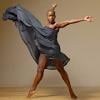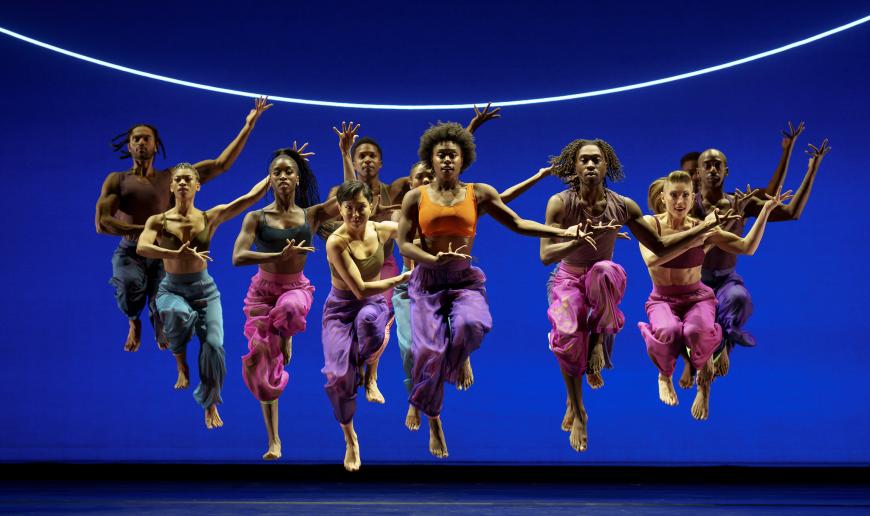
Though he died of an AIDS-related illness in 1989 at age 58, Alvin Ailey — American dancer, director, choreographer, and activist — lives on in the company he created in 1958. Indeed, Alvin Ailey American Dance Theater (AAADT), the troupe designated by the United States Congress as “a vital American cultural ambassador to the world,” is currently celebrating its 65th anniversary. On a 21-city tour, AAADT returns to The Music Center in Los Angeles March 20–24 (as part of its four-year residency here), and then, under the auspices of Cal Performances, the company stops at UC Berkeley April 2–7.
Matthew Rushing, an L.A. native who joined the Ailey company in 1992 at age 17 and was appointed associate artistic director in 2020, has been leading the troupe since Artistic Director Robert Battle, citing health issues, abruptly resigned last November. When asked if he was prepared for his current role, Rushing replied: “No, you can never be prepared. [But] I do know I’m prepared in the sense that the time I’ve committed to being with the organization — going on [some] 31 years — has given me a good foundation.
“There are a lot of challenges that are extremely new,” added Rushing, “but I do feel that I am supported and am up for the challenge.”
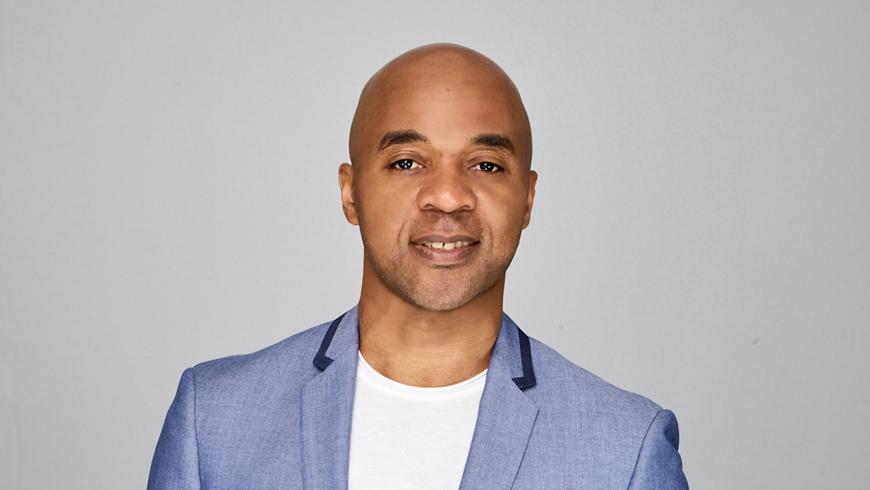
As well he should! At 50, Rushing, whom NPR once called the “Peyton Manning of dance” and who gave his last performance in 2019, has the Ailey DNA in his blood. A signature blend of modern dance and ballet — one teeming with dizzying precision and finely honed muscular beauty — the style is visible on the company’s roster of some 29 dancers, whether performing an Ailey piece or the work of another choreographer.
For the upcoming Music Center performances, there are two different programs, together featuring three L.A. premieres — Jamar Roberts’s Ode (2019), Kyle Abraham’s Are You in Your Feelings? (2022), and Amy Hall Garner’s Century (2023) — as well as a restaging of Ronald K. Brown’s Dancing Spirit (2009). And each performance ends with Ailey’s beloved 1960 masterpiece, Revelations.
As associate artistic director, Rushing explained that he decides on programming, with diversity being key. “When you come to an Ailey program, your cup is filled, and because we have such a wide variety of ballets, it’s important to have different voices, different styles, and different perspectives.
“Kyle is one of the most brilliant choreographers of our day. He is so gifted in craftsmanship, and Robert [Battle] had asked him to create this ballet, but we had not been able to share it with Ailey audiences because of the pandemic.”
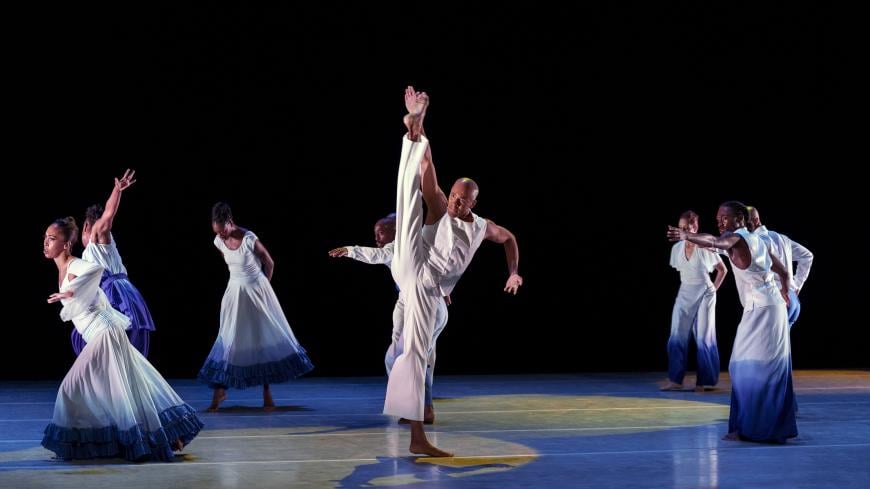
Rushing pointed out that Dancing Spirit was revived last year, and that Brown is another part of the Ailey culture. “He made close to seven ballets on the company, and in reviving his work, I wanted to share it with L.A. audiences.”
And while one might think that gun violence would be a strange topic for a dance, Rushing explained that Roberts’s Ode is “breathtaking. Jamar wanted to approach such devastating subject matter with the idea of beauty. It’s a heavy topic, but he offers beauty as a way of healing. The idea alone is worth sharing with audiences.”
As for Garner’s Century, The New York Times’ Gia Kourlas wrote of its world premiere last December that “the dancers don’t so much step onto the stage … as burst within it like a glitter bomb, showering the space in pink and gold.” Rushing said that he and Garner have a long history together. “Her work fits right in. It’s perfectly synced with the vision of Mr. Ailey — the idea of drawing upon your blood memories and influences you had growing up and taking that and putting it onstage.”
Garner’s work, in fact, is a birthday gift to her grandfather, Henry Spooner, who turned 100 in December. Set to the music of, among others, Count Basie, Ray Charles, and Duke Ellington, the 25-minute Century is Garner’s first dance for the main Ailey company (she made Virtues for Ailey II in 2012) and was commissioned by Battle in 2022.
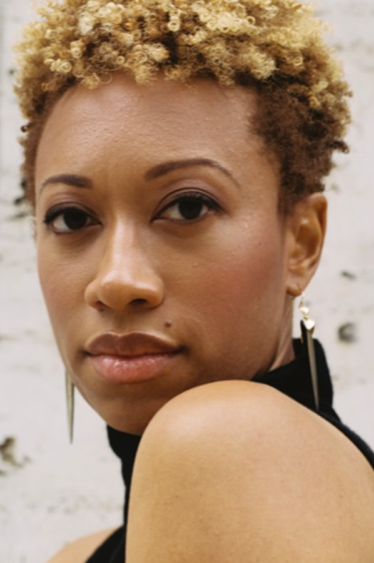
Garner, who is decidedly having a breakout moment, with recent premieres at BalletX, Hubbard Street Dance Chicago, and Paul Taylor Dance Company, noted that, after receiving Battle’s call, “at first I was ecstatic. You let that marinate and then you think, ‘What am I going to do?’ The time is ticking toward that first rehearsal — about a year away. You look at things, [and] you want things to come to you naturally. Then you just dream.
“You have that liberty and that time to see what catches your eye, music, anything that starts inspiring you.”
In Garner’s case, her inspiration came from family. “We kept talking about the 100th birthday for granddad and what we were going to give him. It had nothing to do with dance,” she recalled. “Then it dawned on me. ‘Oh, I have this wonderful opportunity. Why not create a ballet for him in honor of the century he has lived?’ It started from there.”
Garner, who danced on Broadway, working with famed musical theater artists including Gwen Verdon, Susan Stroman, and Ann Reinking, and who was also a Rockette for a Christmas season, said that Century is not only a birthday present for her grandfather but also includes a recording of his voice.
“I didn’t realize until I heard his voice over the sound system at the premiere at [New York] City Center. Then it clicked for me. He could live on forever. This is Alvin Ailey American Dance Theater, a company he has known for a long time. It was the perfect marriage between him and this organization. And adding the element of Mr. Ailey — they have similar backgrounds. They’re both from the South and grew up in a similar style. It aligned.”
Garner has also known Rushing since her student days at Juilliard. “He was a dancer, and I used to watch him onstage and be enamored and inspired. He’s one of those people you strive to be. [When] I started creating the work last summer, Matthew was in the studio every single day. He has been a champion, making sure everything is right. He saw the whole process come to life [and] could probably dance the ballet.”
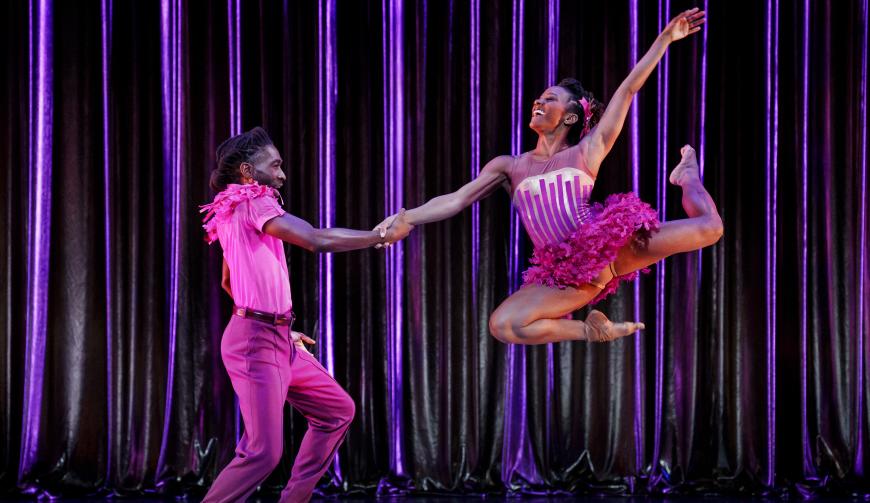
And speaking of process, AAADT holds auditions once a year, with Rushing explaining that he looks for versatility in a dancer. “And a generous sense of expression. As an artist, I think that’s one of the things that’s so beautiful about art — the expression, the individual voice combined with the vision and voice of the choreography. We are like those tools, those instruments of arts. We are the paint, different colors, different musical instruments.
“We are those things that a choreographer comes in and uses as a way of communicating,” Rushing continued. “But we are also called upon with our voices, what the message will be. If you don’t have someone comfortable in their skin, [someone who is] a generous, articulate communicator, then you lose out. It’s about communication — from artist to audience member — and finding out how, from audience to artist, that it truly is an exchange.”
Garner, who has choreographed in several genres, from contemporary to classical, admits to having “the audience in my head when I create. ‘How would this feel to them?’ Definitely, I have things to say in my work, and I can be selfish with some things, but I try to think about the audience, about being generous. I go to the theater to be fed inspiration, hope, and possibility. I think, ‘How would this feel if I were the audience watching this work?’”
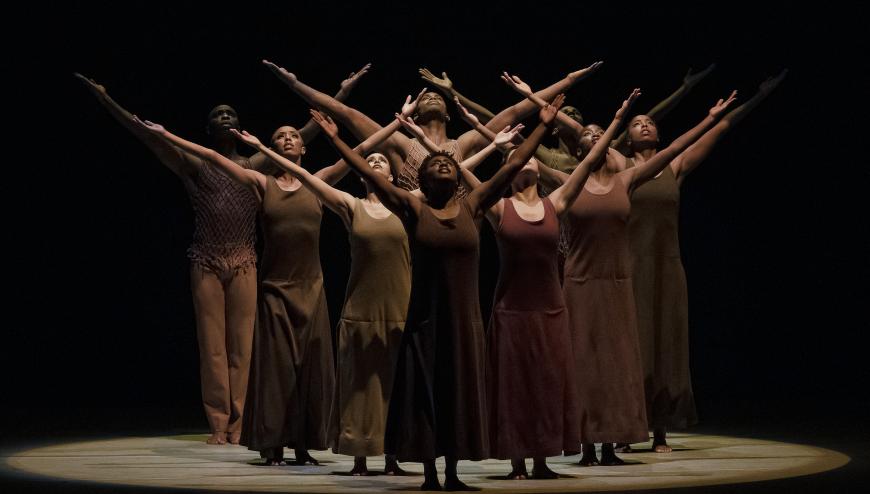
There’s certainly no question how audiences feel about Ailey’s 1960 magnum opus, Revelations. The dance, which has something of a holy mystique about it, would surely qualify as the apotheosis of terpsichorean art. Possibly the most beloved modern dance work — and easily one of the most recognizable in the world — the three-part, 36-minute piece accompanied by African American spirituals harkens back to Ailey’s church experiences as an only child in rural segregated Texas.
Mixing choreographic, historical, and anthropological elements with spirituality, technical brilliance, and dollops of humor, Revelations embodies the very soul of Ailey, and Rushing has danced it more times than he can remember.
“I definitely lost count decades ago,” he said with a laugh, “and even though I’ve lost count, I have spent all that time trying to come up with that answer.”
Asked why Revelations continues to resonate with people around the globe, Rushing replied, “I don’t know if I have the answer, but I do feel it speaks to humanity. What does that mean? It speaks on themes that are universal. No matter who you are and what your background is, you are able to relate to the message of Revelations.
“And what’s that message?” he mused. “It’s an acknowledgment of pain and sorrow. We are all currently going through challenging and sorrowful times. [There’s a need] to cleanse yourself of whatever you’re going through and move toward joy, toward victory over hard times.
“The idea of wanting to move forward,” continued Rushing, “and actually arriving at that place of celebration and joy, despite everyday sorrow that doesn’t end — we’re not trying to negate the hard times. We’re acknowledging that we’re wanting to get better and [that] there is a better place, a better time in life.”
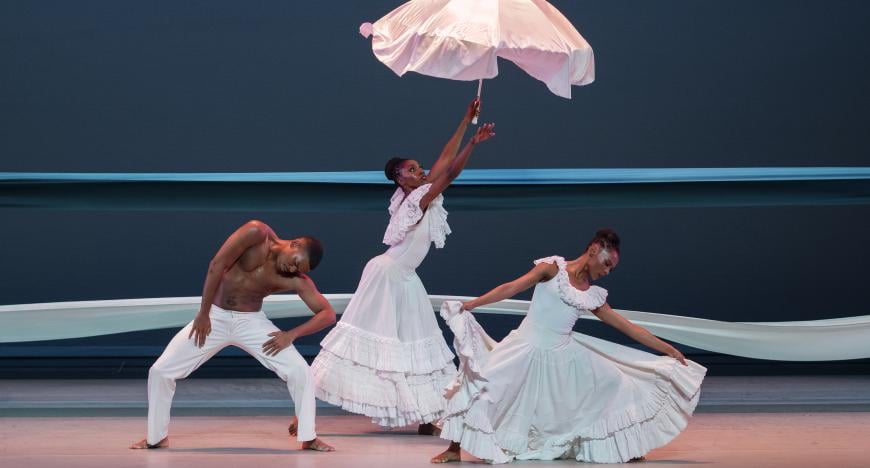
Before the curtain even rises on Revelations, revealing the dancers in their indelible opening pose — pyramid-like, bent at the waist and beseeching arms outstretched — the audience is primed. “Before Revelations starts,” Rushing exclaimed, “there’s an eruption of applause. There are cries, celebrations. They know what’s about to happen, and they’re celebrating in advance.
“It really is touching. It’s mind-blowing,” he added, “even on this tour. As we go to places where we haven’t been in years, the same thing happens.”
This is what art can do, and Rushing shared his thoughts on that very subject. “I think we should not put boundaries on what art should do. There are the obvious things: Art heals. Art entertains. Art educates. Art brings people together,” he said. “Art tells difficult truths. Art brings joy. Art brings beauty. Art can speak on political levels. Art can affect society.
“There are so many things that art can do,” Rushing went on, “and maybe that’s my answer, in a very indirect way — not really putting expectations on what art can do but taking expectations off. I don’t think we have to put it on art to ask the question. It’s the responsibility of the artist and also supporters of the art form. Their responsibility is to keep the art alive. Art itself will be fine, but it’s the artists and supporters who need to step up to their responsibility.”




